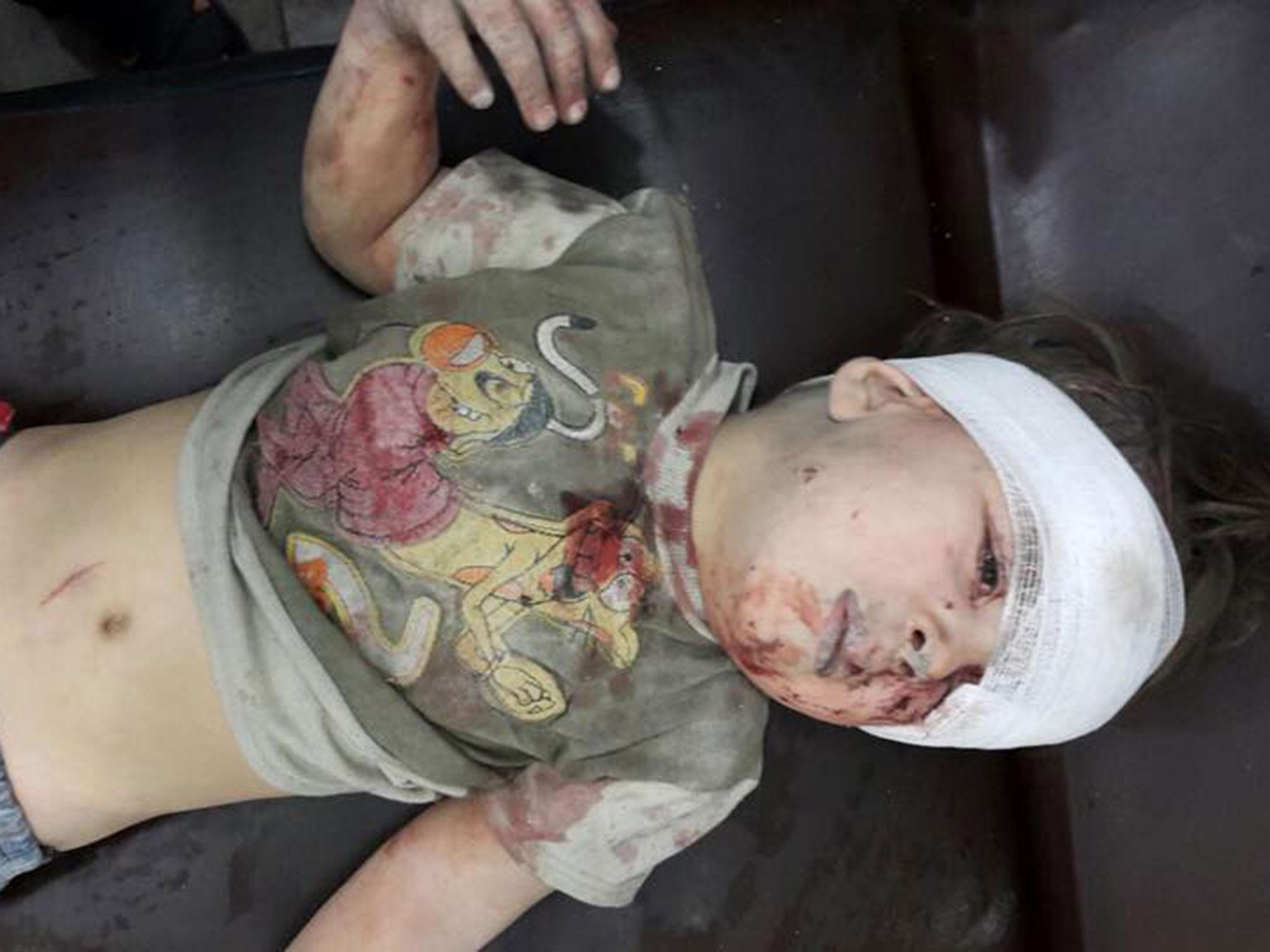Aleppo boy: Photographer behind iconic image of dazed and bloodied child describes harrowing moments that led up to it
Mahmoud Raslan passed several lifeless bodies before seeing the child

Your support helps us to tell the story
From reproductive rights to climate change to Big Tech, The Independent is on the ground when the story is developing. Whether it's investigating the financials of Elon Musk's pro-Trump PAC or producing our latest documentary, 'The A Word', which shines a light on the American women fighting for reproductive rights, we know how important it is to parse out the facts from the messaging.
At such a critical moment in US history, we need reporters on the ground. Your donation allows us to keep sending journalists to speak to both sides of the story.
The Independent is trusted by Americans across the entire political spectrum. And unlike many other quality news outlets, we choose not to lock Americans out of our reporting and analysis with paywalls. We believe quality journalism should be available to everyone, paid for by those who can afford it.
Your support makes all the difference.The photographer who captured the now-iconic image of a stunned and bloodied Syrian boy pulled from rubble in Aleppo has described the terrifying moments which preceded it.
The image of the tiny child, sitting in an orange chair inside an ambulance covered in dust and with blood smeared across his face, encapsulates the horrors inflicted on the war-ravaged northern city and has been widely shared on social media.
"We were passing them from one balcony to the other," said photojournalist Mahmoud Raslan, who took the picture.
He said he had passed three lifeless bodies before receiving the wounded boy.
A doctor in Aleppo - Osama Abu al-Ezz - identified the boy as five-year-old Omran Daqneesh.
He said he was brought to the hospital known as "M10" on Wednesday night following an air strike on the rebel-held neighborhood of Qaterji with head wounds, but no brain injury, and was later discharged.
A doctor at M10 later reported eight people dead, including five children.
Omran was rescued along with his three siblings, aged one, six, and 11, and his mother and father from the rubble of their partially destroyed apartment building, according to Mr Raslan. None sustained major injuries, but the building collapsed shortly after the family was rescued.
"We sent the younger children immediately to the ambulance, but the 11-year-old girl waited for her mother to be rescued. Her ankle was pinned beneath the rubble," Mr Raslan said.
In the video posted late on Wednesday by the Aleppo Media Centre, a man is seen plucking the boy from a chaotic nighttime scene and carrying him inside the ambulance, looking dazed and flat-eyed.
The boy then runs his hand over his blood-covered face, looks at his hands and wipes them on the ambulance chair.
Doctors in Aleppo use code names for hospitals, which they say have been systematically targeted by government airstrikes. Abu al-Ezz said they did that "because we are afraid security forces will infiltrate their medical network and target ambulances as they transfer patients from one hospital to another."

Activists living in opposition areas rely on informers in the government-controlled Latakia province to warn residents of impending airstrikes. On Wednesday evening, an informant in Latakia informed activist networks that a jet had taken off from the Russian air base at Hmeimim.
"We expected the plane to arrive in Aleppo airspace in two minutes, and sure enough it did," said Mr Raslan. "It struck twice."
No one was injured in the first strike, said Mr Raslan.
The horror generated by the image of Omran in the orange chair echoes the anguished global response to the pictures of Aylan Kurdi, the drowned Syrian boy whose body was found on a beach in Turkey and came to encapsulate the horrific toll of Syria's civil war.
Additional reporting by AP
Join our commenting forum
Join thought-provoking conversations, follow other Independent readers and see their replies
0Comments